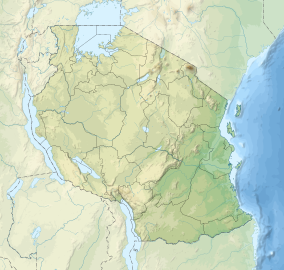Ngorongoro Crater
| Ngorongoro Conservation Area | |
|---|---|
|
IUCN category VI (protected area with sustainable use of natural resources)
|
|

View of the crater
|
|
| Location |
Arusha Region, |
| Nearest city | Ngorongoro Festival |
| Coordinates | 3°12′S 35°27′E / 3.200°S 35.450°ECoordinates: 3°12′S 35°27′E / 3.200°S 35.450°E |
| Area | 8,292 km2 (3,202 sq mi) |
| Established | 1959 |
| Visitors | over 500,000 per year |
| Governing body | Tanzania National Parks Authority |
| Type | Natural |
| Criteria | vii, viii, ix, x |
| Designated | 1979 (3rd session) |
| Reference no. | 39 |
| State Party | Tanzania |
| Region | Africa |
| Endangered | 1984–1989 |
The Ngorongoro Conservation Area (NCA) is a protected area and a World Heritage Site located 180 km (110 mi) west of Arusha in the Crater Highlands area of Tanzania. The area is named after Ngorongoro Crater, a large volcanic caldera within the area. The conservation area is administered by the Ngorongoro Conservation Area Authority, an arm of the Tanzanian government, and its boundaries follow the boundary of the Ngorongoro Division of the Arusha Region.
It has been reported in 2009 that the government authority has proposed a reduction of the population of the conservation area from 65,000 to 25,000. There are plans being considered for 14 more luxury tourist hotels, so people can access "the unparalleled beauty of one of the world's most unchanged wildlife sanctuaries".
Ngorongoro was named by the Maasai as El-Nkoronkoro meaning Gift of Life. This was because they were migrating from Central Africa for a permanent settlement. That is why the Ngorongoro Conservation Area is mostly occupied by the Maasai. Based on fossil evidence found at the Olduvai Gorge, various hominid species have occupied the area for 3 million years.
Hunter-gatherers were replaced by pastoralists a few thousand years ago. The Mbulu came to the area about 2,000 years ago and were joined by the Datooga around the year 1700. Both groups were driven from the area by the Maasai in the 1800s.
Massive fig trees in the northwest of the Lerai Forest are sacred to the Maasai and the Datooga. Some of them may have been planted on the grave of a Datago leader who died in battle with the Maasai around 1840.
No Europeans are known to have set foot in the Ngorongoro Crater until 1892, when it was visited by Oscar Baumann. Two German brothers (Adolph and Friedrich Siedentopf) farmed in the crater until the outbreak of World War I, after leasing the land from the administration of German East Africa. The brothers regularly organized shooting parties to entertain their German friends. They also attempted to drive the wildebeest herds out of the crater.
...
Wikipedia

